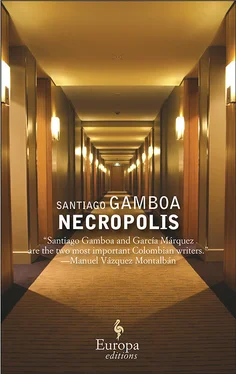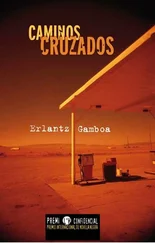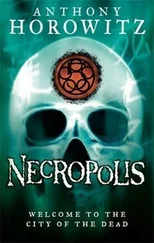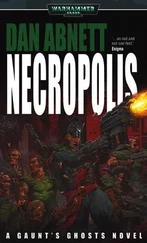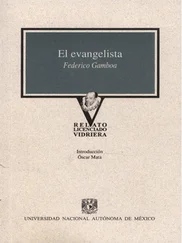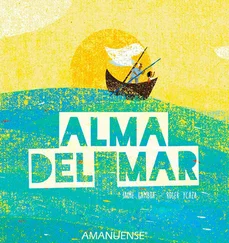Those who don’t do their duty in Vaginaland are sent to Anusland. It’s a change of atmosphere or, as Kim Ji Lu put it, a new solar system around a black star, where the objective is to conceal, to plunge everything into darkness. But the queens of both systems decide to fight each other. There is a final battle in which all the women soldiers are possessed in DP, and peace is declared in the absence of a winner.
We shot the movie and it was a critical hit in Europe, which brought Eve Studios some much-needed prestige. In the United States, we shot a lighter, comic version that lived up to our financial expectations. But the important thing was the prestige that Vaginaland brought both us and Kim Ji Lu. One funny thing about that was that many people, seeing the two names, assumed that Kay and Kim were brothers or at least from the same city, an assumption that could only provoke laughter if you saw them together, one huge, with his platinum-plated dark glasses and his palm-tree shirts, and the other thin and discreet, dressed in gray or black. Anyway, that was my little family, and the truth is that business was prospering. One afternoon Kay called me into his office and showed me a bank statement. I could hardly believe it, we had a million euros. It was the first time in my life I had seen that amount, and it was mine, or rather, ours.
During those years there was a kind of storm. I had such a strong will, it was like a small plane flying through rain and thunder, but always managing to reach a lighted airfield. Things happened every day, every week and year. We shot dozens of movies and each time Kim went a bit further. One day he came to us with a new project. A horror movie. Horror and sex, he said, it’s brilliant, read this. He took out a script and I saw the title, Deflowering. It told the story of a young woman deflowered by the devil, who, like the God Zeus, uses different disguises to seduce her. Along the way, she witnesses other deflowerings and a couple of exorcisms, which were supposed, at least in theory, to make the audience’s hair stand on end. We read it, and for the first time there was a disagreement between Kay and Kim. Dimitros claimed that there was no feeling more diametrically opposed to sex than fear, because fear inhibited erection and without an erection there is no porn. Kim disagreed, saying that art was the true genital organ to which we ought to aspire and that, once it was achieved, then penises would rise like stalagmites and vaginas melt in their own juice.
I didn’t want to give my opinion, but told Kay that, as Kim’s screenplays had given us prestige and success, we should show solidarity with his talent and support him, even if the movie turned out a failure. Not everything a genius does is perfect, or, as I read somewhere, “we cannot be sublime without interruption.” We did the movie, and again it came out well, perhaps because the scary parts weren’t all that scary, but simply gave the movie a sense of darkness and mystery that helped make the sex scenes stand out more.
In those years, at the beginning of the Nineties, a very large number of artists went to Sarajevo, in Bosnia, to express their solidarity with the civilian population trapped in the siege of the city, victims of that stupid war that had its origin in the desire for independence of those republics that had previously been part of Yugoslavia. Theatrical groups from Germany, Austria, France, and Poland all went. The writer Susan Sontag and her son staged a version of Beckett’s Waiting for Godot there, which stirred international opinion and gave the Sarajevans, at least for a time, the feeling that they weren’t alone, and I say “the feeling” because in reality they were indeed alone, more alone than a stone thrown in a river, which was proved by everything that happened later. Faced with that horror, Kay said, we have to do something, we can’t just fold our arms while people are dying. We decided to do a stage show that could be taken and presented there. We started working on that and once again it was Kim who came up with the best idea, which was to do an adaptation of the Marquis de Sade’s novel Justine or the Misfortunes of Virtue, the idea being to showcase a work that had survived intolerance. That was the message Kim wanted to give the Sarajevans. When it was ready, with six actors and a small technical team, we applied to the United Nations for entry papers and they gave us visas as artists within the humanitarian aid program. We traveled from Paris to Zagreb, spent the night there, and the following day flew to Split, on the Dalmatian coast, from where UN flights left for Sarajevo.
My God, what an experience that was.
We went in an old Hercules with wooden seats, which flew at a very high altitude and carried incendiary ammunition, in case anyone fired a missile at us. After an hour’s flight the plane went into a nosedive and our skin stuck to our bones. Then, just as it looked as if we were about to crash, the nose lifted, the plane returned to a horizontal position, and we landed. We could see the roofs of burned and demolished houses at the sides of the airfield.
After taxiing along the runway, the Hercules opened at the back and a UN soldier yelled at us, run to that hill and take cover, they’re shooting from over there, pointing to the other side of the runway. We grabbed our bags and the boxes with the props and ran behind the hill. The airport’s control tower was leaning to the side, not directly out of the ground like the Tower of Pisa but on top of a horizontal building. The walls were full of holes, and there wasn’t a single window in good condition. In their place were sheets of steel intended to stop bullets from snipers.
The French UN soldiers checked our baggage meticulously and after a while let us get into an armored car that was to take us to the city. The city. A euphemism for that vast mountain of rubble that Sarajevo had turned into. On the night of our arrival, we could feel it on our skin, because there was an air raid. Grenades and shells plowed across the sky, leaving green vapor trails. It was a macabre spectacle that, in spite of its dramatic quality, contained a certain beauty. I crouched on one of the upper floors of the hotel, looking out through a crack in the wall, because the hotel had been hit early in the fighting and now only the first six floors were in use. The atmosphere was bleak. The corridors were like caves, the rooms side grottoes covered in dust and rubble. In one of them I found a girl’s shoe. A little patent leather shoe with a low heel. I picked it up and dusted it off a bit. I lit my cigarette lighter and saw it had been pink. It was some consolation that at least there wasn’t a foot in it. Then I remembered the fantasies I had had in Paris, when I was taking drugs and Kay was in hospital. Images of women who saw destroyed cities, and a caravan of hooded men making their way through the rubble to a temple on top of a hill, before being massacred in a shower of black bullets, in the middle of an even blacker night. And I said to myself: it wasn’t a fantasy. It’s happening here.
The next day, the sun was radiant. We went with our props team to the Opera House and put up the lights and the set. One of our colleagues, Yarco, was Yugoslav, so there was no problem in making ourselves understood. The only sticky moment was when the director of the theater, a man of seventy who had agreed to our participation as a gesture of solidarity, was disturbed by some of the imagery and asked for a summary of the play. Yarco explained that it was a modern adaptation of the Marquis de Sade; the man was enthusiastic, but said, I don’t want any explicit sex scenes, my audience would find that quite sad, so we did as he said, limiting ourselves to simulating the couplings, and it all went very well. It was a wonderful day.
Читать дальше
